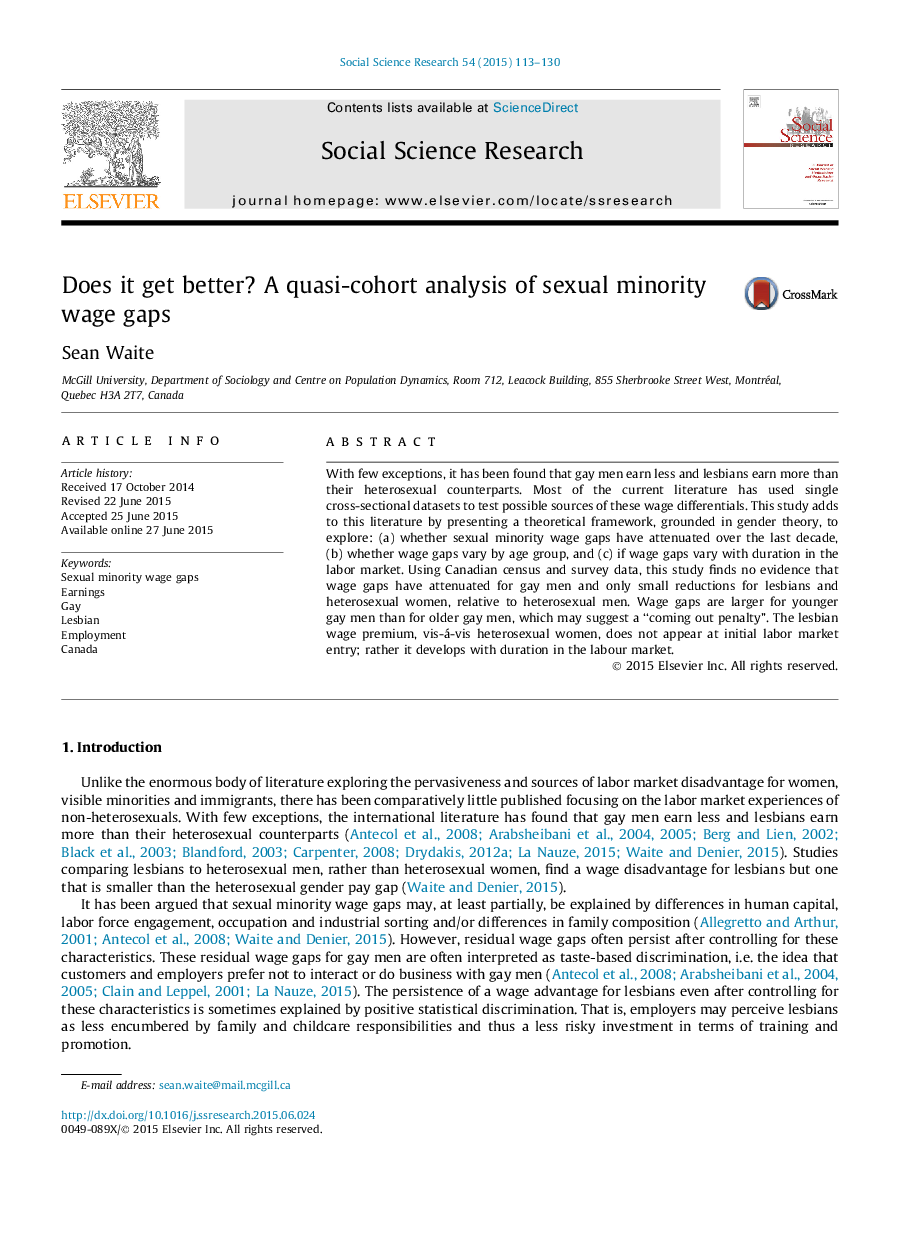| کد مقاله | کد نشریه | سال انتشار | مقاله انگلیسی | نسخه تمام متن |
|---|---|---|---|---|
| 955616 | 1476121 | 2015 | 18 صفحه PDF | دانلود رایگان |
• Labor markets are stratified by gender and sexual orientation.
• Canadian Census and National Household Survey data from 2001, 2006 and 2011.
• There is little evidence that sexual minority wage gaps have attenuated since 2001.
• Wage gaps are largest for younger gay men and older lesbians, relative to heterosexuals.
• Intra-household decision making does not explain coupled gay men’s disadvantage.
With few exceptions, it has been found that gay men earn less and lesbians earn more than their heterosexual counterparts. Most of the current literature has used single cross-sectional datasets to test possible sources of these wage differentials. This study adds to this literature by presenting a theoretical framework, grounded in gender theory, to explore: (a) whether sexual minority wage gaps have attenuated over the last decade, (b) whether wage gaps vary by age group, and (c) if wage gaps vary with duration in the labor market. Using Canadian census and survey data, this study finds no evidence that wage gaps have attenuated for gay men and only small reductions for lesbians and heterosexual women, relative to heterosexual men. Wage gaps are larger for younger gay men than for older gay men, which may suggest a “coming out penalty”. The lesbian wage premium, vis-á-vis heterosexual women, does not appear at initial labor market entry; rather it develops with duration in the labour market.
Journal: Social Science Research - Volume 54, November 2015, Pages 113–130
